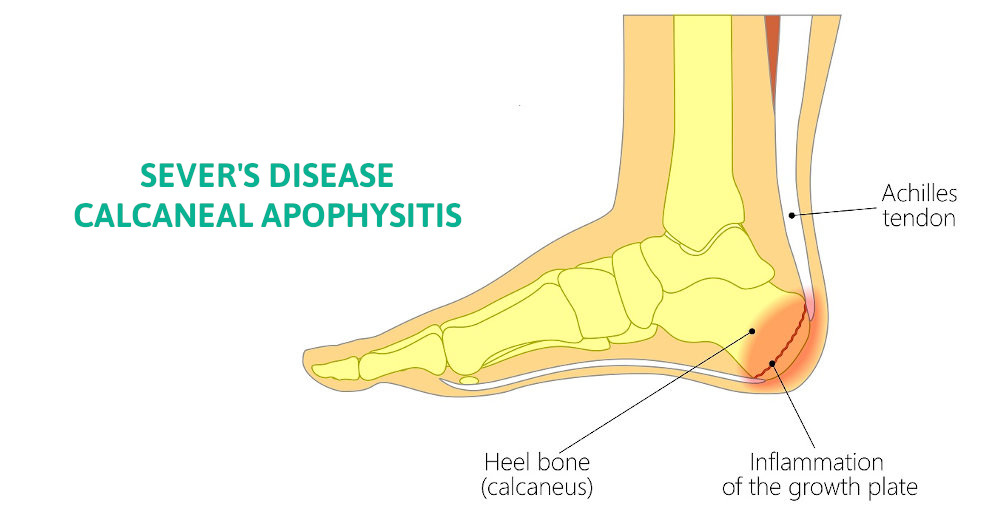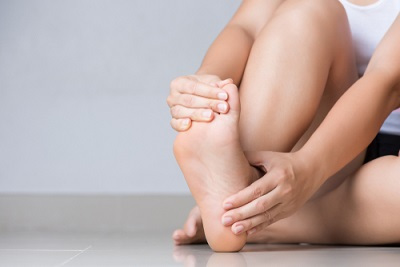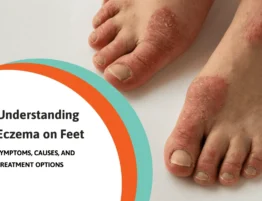
What can you do if your child complains about heel pain?
Sever’s disease is a problem that afflicts many active children worldwide 1. Sever’s Disease is when the growth plate on your heel bone becomes inflamed and swollen, causing pain. Another name for this condition is calcaneal apophysitis. Typically, active children ages 8-13 are at highest risk for this disease. Stretching for sever’s disease is highly recommended.
What To Look For
Usually, the pain is centered around the back of the heel where the Achilles Tendon attaches. However, you may also experience pain around the sides of the heel bone. Pain is typically present during heavy activity, but goes away when activity stops. Pain will often be noticed when the heel is squeezed, which is termed the “squeeze test”.
Sever’s Disease Causes
Calcaneal apophysis is the medical term for the growth plate on the heel bone. This serves as the attachment site of the Achilles tendon. It also is the attachment site of soft tissue structures that run from the ball of the foot, back to the bottom of the heel bone. The pulling of these soft tissue structures on the heel is thought to be the primary reason for pain. Children often go through growth spurts, and when the bony structures grow quickly, the muscles and tendons create tension causing the soft tissue structures such as the Achilles tendon to become too tight. Additionally, any weight bearing activities such as running, jumping or landing on the heel bone can cause Sever’s disease. It is usually caused by repetitive trauma rather than an injury. The pulling of the soft tissues such as the Achilles tendon on the growth plate can cause it to become inflamed which is why stretching for sever’s disease is important.
Treatments for Sever’s Disease

When stretching the soleus muscle, the knee can be in a flexed position. However, when stretching the gastrocnemius muscle, the knee must be extended as the gastrocnemius muscle passes above the knee joint. When stretching is done the stretch should be held for 30 seconds each time. It may also help to stretch the soft tissues on the bottom of the foot that go out to the toes by pulling the toes upward. The child should actively stretch when the problem first starts to decrease the chances of the pain becoming worse.
Along with stretching, additional treatment options include icing the area, heel cups in shoes, over the counter arch supports, and anti-inflammatory medications.
Often parents that we see have made the attempts outlined above, and the pain still persists. Many are wondering if the child should be taken out of the activity that is causing the pain. I want to reassure you that there is no need to worry. The short answer is no, because typically when the child is at play, they will not cause any permanent injury.
What to do When Your Attempts Fail?
Whenthe the above approcaches fail, then orthotics become – what I would consider – the gold standard treatment. These are not the typical arch supports that are purchased in drug or shoe stores, but rather an insert made precisely for the child’s foot. Some podiatrists may take a non-weight bearing cast impression of the foot, or many of us now use a digital scanning technique. Either way, we are positioning the foot where it should be, not where it is when bearing weight.
Why Are Orthotics so Successful?
With every step you take running or walking, the heel will roll side to side. This is called pronation and supination. When this occurs the soft tissue structures are pulling on the heel bone (growth plate) where they attach. By reducing the side-to-side motion with an orthotic precisely made to the child’s foot, the pain can quickly go away. This also eliminates the need for stretching, icing, and resting. Many children will have significant improvement within days. Using orthotics is directly addressing the cause of the problem by reducing the pull on the soft tissue on the heel bone. Often, we see children who have no issues with flexibility, so stretching will have little to no effect. Finally, it’s important to understand that there is a very low risk of your child creating a permanent problem with their foot if they continue activity while having pain. So, try the band aid approaches in the beginning, but if they fail after a few weeks, move on with your treatment to custom orthotics from a podiatrist in Fort Collins!
1Fares MY, Salhab HA, Khachfe HH, Fares J, Haidar R, Musharrafieh U. Sever’s Disease of the Pediatric Population: Clinical, Pathologic, and Therapeutic Considerations. Clin Med Res. 2021 Sep;19(3):132-137. doi: 10.3121/cmr.2021.1639. PMID: 34531270; PMCID: PMC8445662.









Write a comment: